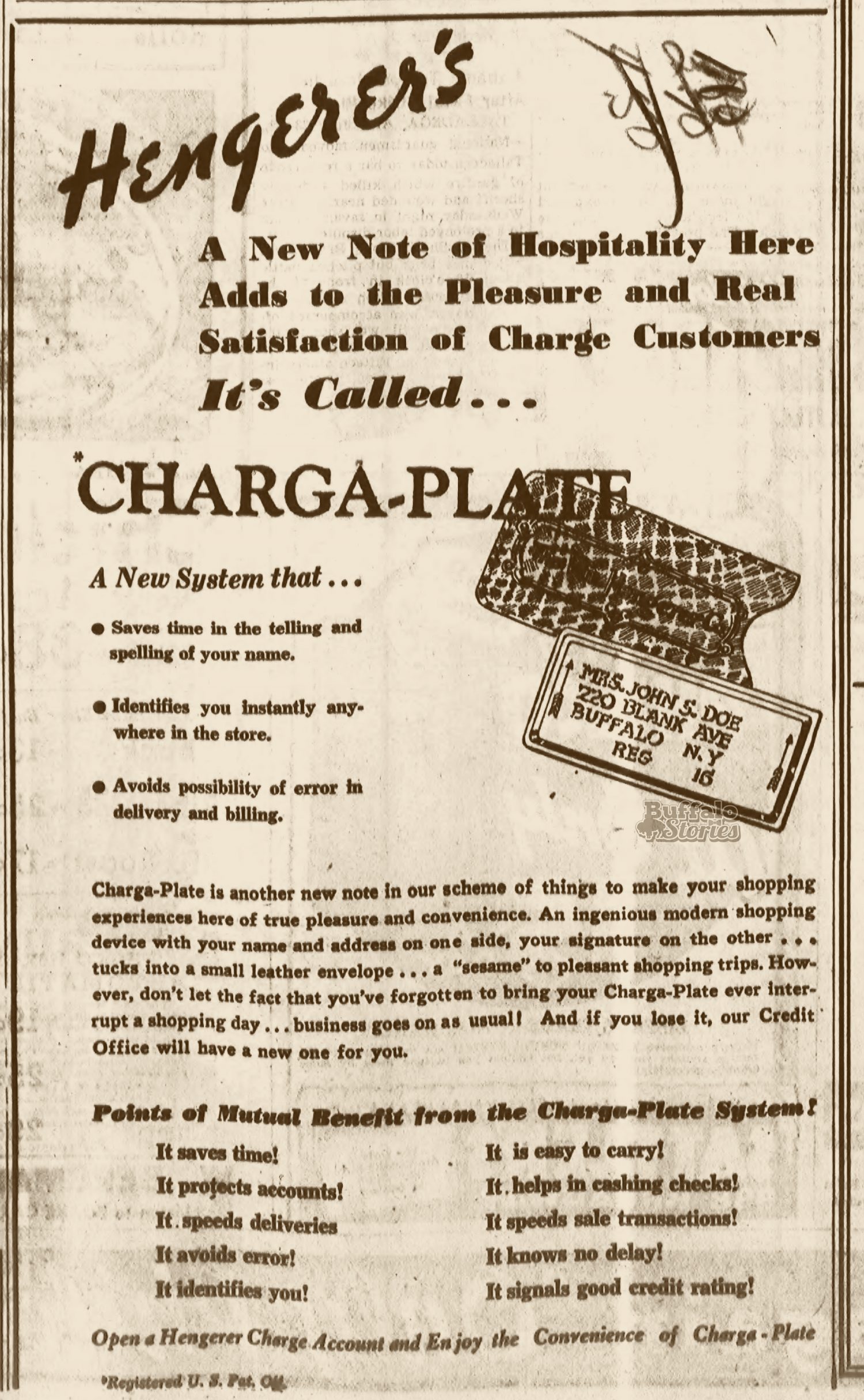 By Steve Cichon
By Steve Cichon
steve@buffalostories.com
@stevebuffalo
In the days before Mastercard and Visa, there was the Charga-Plate – a little metal card with your name and address that in Buffalo, was good at all the downtown merchants.

The Charga-Plate was introduced to the Buffalo market in 1936, as reported in the Courier-Express.
 “J. N. Adam & Company and the Wm. Hengerer Company will begin operation of a new credit system on Wednesday. The plan, known as the charga-plate system, is designed to save delay and to protect the charge customer from fraud.
“J. N. Adam & Company and the Wm. Hengerer Company will begin operation of a new credit system on Wednesday. The plan, known as the charga-plate system, is designed to save delay and to protect the charge customer from fraud.
“The charga-plate is made of metal about the size of a calling card. On one side is embossed the owners name and address, and the number of his account, on the other is a specially treated card on which his signature is affixed indelibly. An addressing machine prints the information in triplicate upon the sales slip signed by the customer when a purchase is made. The former delay thus is avoided, and the name is not spoken, thus preventing anyone overhearing it and using it to charge purchases fraudulently.

While today not knowing whether to insert or swipe or which button to hit for credit can leave you feeling a bit befuddled at the checkout, there was a time when the idea of a credit card was completely foreign.
“Each plate is a thin metal tag, resembling a military ‘dogtag,’ on which the customer’s name, address and account number have been embossed.
“On the reverse side of the plate is a card insert for the customer’s signature. A red leather carrying case is provided for convenience in spotting the Charga-Plate in handbag or purse.
“After the customer selects her purchases, the clerk lists the articles and their prices on a sales slip. Space at the top of the slip reserved for the customer’s name and address is left blank. The customer then is asked to sign her name.
“Then, the customer is asked for her Charga-Plate. The clerk places the plate, embossed side upward, on a small, hand-operated device called an addresser, slips the top of the charge slip over the plate and presses the handle down.
“When the handle is lifted, out comes the slip clearly imprinted with the customer’s name, address and account number.
“The clerk then hands the plate with its little leather case back to the customer, and another charge sale has been made.
“Customers, the stores urge, should carry their Charga-Plates at all times unless they want to go through the old time-consuming routine.”
By 1963, stores like Hens & Kelly and AM&A’s began offering their own credit cards, and it was only a matter of time. By the end of the 1960s, the era of Charga-Plate shopping had ended in downtown Buffalo, even though many clerks at some of Buffalo’s finer department stores were still calling your debit card a “charge plate” well into the ’90s.
